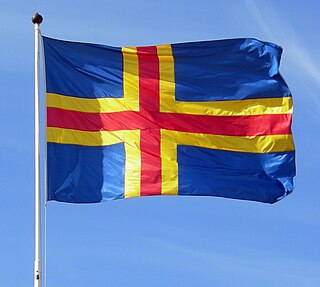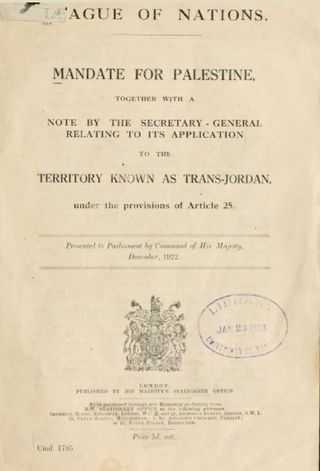Related Research Articles

The Treaty of Versailles was a peace treaty signed on 28 June 1919. As the most important treaty of World War I, it ended the state of war between Germany and most of the Allied Powers. It was signed in the Palace of Versailles, exactly five years after the assassination of Archduke Franz Ferdinand, which led to the war. The other Central Powers on the German side signed separate treaties. Although the armistice of 11 November 1918 ended the actual fighting, and agreed certain principles and conditions including the payment of reparations, it took six months of Allied negotiations at the Paris Peace Conference to conclude the peace treaty. Germany was not allowed to participate in the negotiations before signing the treaty.

The 1920s was a decade that began on January 1, 1920, and ended on December 31, 1929. Primarily known for the economic boom that occurred in the Western World following the end of World War I (1914–1918), the decade is frequently referred to as the "Roaring Twenties" or the "Jazz Age" in America and Western Europe, and the "Golden Twenties" in Germany, while French speakers refer to the period as the "Années folles" to emphasize the decade's social, artistic, and cultural dynamism.

1840 (MDCCCXL) was a leap year starting on Wednesday of the Gregorian calendar and a leap year starting on Monday of the Julian calendar, the 1840th year of the Common Era (CE) and Anno Domini (AD) designations, the 840th year of the 2nd millennium, the 40th year of the 19th century, and the 1st year of the 1840s decade. As of the start of 1840, the Gregorian calendar was 12 days ahead of the Julian calendar, which remained in localized use until 1923.

The Irish Republic was an revolutionary state that declared its independence from the United Kingdom in January 1919. The Republic claimed jurisdiction over the whole island of Ireland, but by 1920 its functional control was limited to only 21 of Ireland's 32 counties, and British state forces maintained a presence across much of the north-east, as well as Cork, Dublin and other major towns. The republic was strongest in rural areas, and through its military forces was able to influence the population in urban areas that it did not directly control.
The First Dáil was Dáil Éireann as it convened from 1919 to 1921. It was the first meeting of the unicameral parliament of the revolutionary Irish Republic. In the December 1918 election to the Parliament of the United Kingdom, the Irish republican party Sinn Féin won a landslide victory in Ireland. In line with their manifesto, its MPs refused to take their seats, and on 21 January 1919 they founded a separate parliament in Dublin called Dáil Éireann. They declared Irish independence, ratifying the Proclamation of the Irish Republic that had been issued in the 1916 Easter Rising, and adopted a provisional constitution.

The Irish War of Independence or Anglo-Irish War was a guerrilla war fought in Ireland from 1919 to 1921 between the Irish Republican Army and British forces: the British Army, along with the quasi-military Royal Irish Constabulary (RIC) and its paramilitary forces the Auxiliaries and Ulster Special Constabulary (USC). It was part of the Irish revolutionary period.

The history of Åland can be traced back to roughly 4000 BCE, when humans first reached the archipelago in the Neolithic period. Several Bronze Age villages have been found on Åland. During the Viking Age, six hillforts were built. Sweden controlled the Åland Islands from the 1200s until 1809, during which, Kastelholm Castle was the focal point of many battles. In 1809, the Russian empire took Åland and Finland. In 1854, British and French forces attacked Bomarsund. The Åland Islands were then demilitarised until 1906. In 1918, Swedish and German forces occupied the Åland Islands. After the Finnish Civil War, Åland joined Finland following the Åland Convention of 1921.

The Paris Peace Conference was a set of formal and informal diplomatic meetings in 1919 and 1920 after the end of World War I, in which the victorious Allies set the peace terms for the defeated Central Powers. Dominated by the leaders of Britain, France, the United States and Italy, the conference resulted in five treaties that rearranged the maps of Europe and parts of Asia, Africa and the Pacific Islands, and also imposed financial penalties. Germany, Austria-Hungary, Turkey and the other losing nations were not given a voice in the deliberations; this later gave rise to political resentments that lasted for decades. The arrangements made by this conference are considered one of the great watersheds of 20th-century geopolitical history.

Ferdinand Foch was a French general, Marshal of France and member of the Académie Française. He distinguished himself as Supreme Allied Commander on the Western Front during the First World War in 1918.

The Treaty of Sèvres was a 1920 treaty signed between some of the Allies of World War I and the Ottoman Empire, but not ratified. The treaty would have required the cession of large parts of Ottoman territory to France, the United Kingdom, Greece and Italy, as well as creating large occupation zones within the Ottoman Empire. It was one of a series of treaties that the Central Powers signed with the Allied Powers after their defeat in World War I. Hostilities had already ended with the Armistice of Mudros.

The Silesian Uprisings were a series of three uprisings from August 1919 to July 1921 in Upper Silesia, which was part of the Weimar Republic at the time. Ethnic Polish and Polish-Silesian insurrectionists, seeking to have the area transferred to the newly founded Polish Republic, fought German police and paramilitary forces which sought to keep the area part of the new German state founded after World War I. Following the conflict, the area was divided between the two countries. The rebellions have subsequently been commemorated in modern Poland as an example of Polish nationalism. Despite central government involvement in the conflict, Polish historiography renders the events as uprisings reflecting the will of ordinary Upper Silesians rather than a war.

The Democratic Republic of Georgia was the first modern establishment of a republic of Georgia, which existed from May 1918 to February 1921. Recognized by all major European powers of the time, DRG was created in the wake of the Russian Revolution of 1917, which led to the collapse of the Russian Empire and allowed territories formerly under Russia's rule to assert independence. In contrast to Bolshevik Russia, DRG was governed by a moderate, multi-party political system led by the Georgian Social Democratic Party (Mensheviks).

The Paris Gun was a type of German long-range siege gun, several of which were used to bombard Paris during World War I. They were in service from March to August 1918. When the guns were first employed, Parisians believed they had been bombed by a high-altitude Zeppelin, as the sound of neither an airplane nor a gun could be heard. They were the largest pieces of artillery used during the war by barrel length, and qualify under the (later) formal definition of large-calibre artillery. Also called the "Kaiser Wilhelm Geschütz", they were often confused with Big Bertha, the German howitzer used against Belgian forts in the Battle of Liège in 1914; indeed, the French called them by this name as well. They were also confused with the smaller "Langer Max" cannon, from which they were derived. Although the famous Krupp-family artillery makers produced all these guns, the resemblance ended there.
The Franco-Polish Alliance was the military alliance between Poland and France that was active between the early 1920s and the outbreak of the Second World War. The initial agreements were signed in February 1921 and formally took effect in 1923. During the interwar period the alliance with Poland was one of the cornerstones of French foreign policy.

The partition of the Ottoman Empire was a geopolitical event that occurred after World War I and the occupation of Constantinople by British, French, and Italian troops in November 1918. The partitioning was planned in several agreements made by the Allied Powers early in the course of World War I, notably the Sykes–Picot Agreement, after the Ottoman Empire had joined Germany to form the Ottoman–German alliance. The huge conglomeration of territories and peoples that formerly comprised the Ottoman Empire was divided into several new states. The Ottoman Empire had been the leading Islamic state in geopolitical, cultural, and ideological terms. The partitioning of the Ottoman Empire after the war led to the domination of the Middle East by Western powers such as Britain and France, and saw the creation of the modern Arab world and the Republic of Turkey. Resistance to the influence of these powers came from the Turkish National Movement but did not become widespread in the other post-Ottoman states until the period of rapid decolonization after World War II.

The Kingdom of Egypt was the legal form of the Egyptian state during the latter period of the Muhammad Ali dynasty's reign, from the United Kingdom's recognition of Egyptian independence in 1922 until the abolition of the monarchy of Egypt and Sudan in 1953 following the Egyptian Revolution of 1952. Until the Anglo-Egyptian treaty of 1936, the Kingdom was only nominally independent, as the United Kingdom retained control of foreign relations, communications, the military, and Sudan. Officially, Sudan was governed as a condominium of the two states, however, in reality, true power in Sudan lay with the United Kingdom. Between 1936 and 1952, the United Kingdom continued to maintain its military presence, and its political advisers, at a reduced level.
The Indian Political Intelligence Office (IPIO) was an intelligence organisation initially established in England in 1909 in response to the dissemination of anarchist and revolutionary elements of Indian nationalism to different countries in Europe after the liquidation of India House in London in 1909. It formally came to be called the Indian Political Intelligence (IPI) from 1921.

The Sultanate of Egypt was a British protectorate in Egypt which existed from 1914, after the outbreak of World War I, to 1922, when it ceased to exist as a result of the Unilateral Declaration of Egyptian Independence.
Hepworth Picture Plays was a British film production company active during the silent era. Founded in 1897 by the cinema pioneer Cecil Hepworth, it was based at Walton Studios west of London.

The Mandate for Palestine was a League of Nations mandate for British administration of the territories of Palestine and Transjordan – which had been part of the Ottoman Empire for four centuries – following the defeat of the Ottoman Empire in World War I. The mandate was assigned to Britain by the San Remo conference in April 1920, after France's concession in the 1918 Clemenceau–Lloyd George Agreement of the previously agreed "international administration" of Palestine under the Sykes–Picot Agreement. Transjordan was added to the mandate after the Arab Kingdom in Damascus was toppled by the French in the Franco-Syrian War. Civil administration began in Palestine and Transjordan in July 1920 and April 1921, respectively, and the mandate was in force from 29 September 1923 to 15 May 1948 and to 25 May 1946 respectively.
References
- ↑ Cerretano, Valerio (2007). The Treasury, Britain’s post-war reconstruction and the industrial intervention of the Bank of England, 1921-1929. Paris: PARIS-JOURDAN SCIENCES ECONOMIQUES.